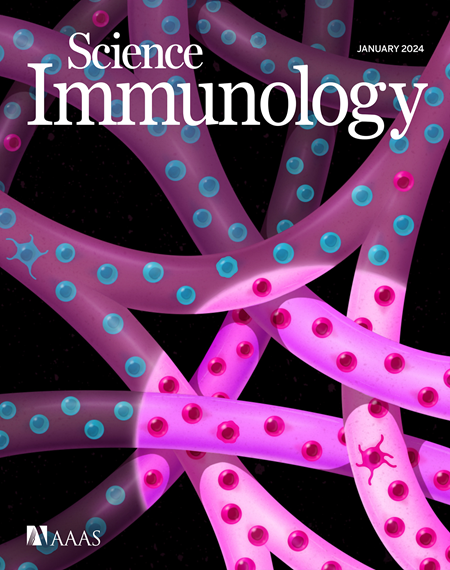Infection and chronic disease activate a systemic brain-muscle signaling axis
IF 17.6
1区 医学
Q1 IMMUNOLOGY
引用次数: 0
Abstract
Infections and neurodegenerative diseases induce neuroinflammation, but affected individuals often show nonneural symptoms including muscle pain and muscle fatigue. The molecular pathways by which neuroinflammation causes pathologies outside the central nervous system (CNS) are poorly understood. We developed multiple models to investigate the impact of CNS stressors on motor function and found that Escherichia coli infections and SARS-CoV-2 protein expression caused reactive oxygen species (ROS) to accumulate in the brain. ROS induced expression of the cytokine Unpaired 3 (Upd3) in Drosophila and its ortholog, IL-6, in mice. CNS-derived Upd3/IL-6 activated the JAK-STAT pathway in skeletal muscle, which caused muscle mitochondrial dysfunction and impaired motor function. We observed similar phenotypes after expressing toxic amyloid-β (Aβ42) in the CNS. Infection and chronic disease therefore activate a systemic brain-muscle signaling axis in which CNS-derived cytokines bypass the connectome and directly regulate muscle physiology, highlighting IL-6 as a therapeutic target to treat disease-associated muscle dysfunction.
感染和慢性疾病会激活系统性脑-肌肉信号轴。
感染和神经退行性疾病会诱发神经炎症,但患者通常表现出肌肉疼痛和肌肉疲劳等非神经症状。人们对神经炎症导致中枢神经系统(CNS)以外病变的分子途径知之甚少。我们开发了多种模型来研究中枢神经系统应激源对运动功能的影响,并发现大肠杆菌感染和 SARS-CoV-2 蛋白表达会导致活性氧(ROS)在大脑中积聚。ROS诱导果蝇细胞因子Unpaired 3(Upd3)和小鼠细胞因子IL-6的表达。中枢神经系统衍生的Upd3/IL-6激活了骨骼肌中的JAK-STAT通路,导致肌肉线粒体功能障碍和运动功能受损。我们在中枢神经系统中表达毒性淀粉样蛋白-β(Aβ42)后也观察到了类似的表型。因此,感染和慢性疾病激活了系统性的脑-肌肉信号轴,其中中枢神经系统衍生的细胞因子绕过连接组直接调节肌肉生理,这突出表明IL-6是治疗疾病相关肌肉功能障碍的治疗靶点。
本文章由计算机程序翻译,如有差异,请以英文原文为准。
求助全文
约1分钟内获得全文
求助全文
来源期刊

Science Immunology
Immunology and Microbiology-Immunology
CiteScore
32.90
自引率
2.00%
发文量
183
期刊介绍:
Science Immunology is a peer-reviewed journal that publishes original research articles in the field of immunology. The journal encourages the submission of research findings from all areas of immunology, including studies on innate and adaptive immunity, immune cell development and differentiation, immunogenomics, systems immunology, structural immunology, antigen presentation, immunometabolism, and mucosal immunology. Additionally, the journal covers research on immune contributions to health and disease, such as host defense, inflammation, cancer immunology, autoimmunity, allergy, transplantation, and immunodeficiency. Science Immunology maintains the same high-quality standard as other journals in the Science family and aims to facilitate understanding of the immune system by showcasing innovative advances in immunology research from all organisms and model systems, including humans.
 求助内容:
求助内容: 应助结果提醒方式:
应助结果提醒方式:


